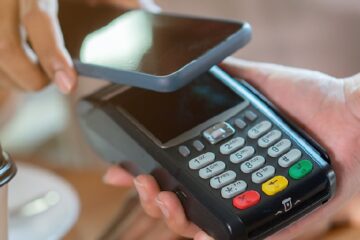Bangladesh, a rapidly developing economy, is witnessing a significant transformation in its financial services sector driven by digital banking. With the rise of mobile internet penetration, government-backed digital initiatives, and the growing demand for accessible financial solutions, digital banking is reshaping how financial services are offered and consumed in the country.
Adoption of digital financial services in Bangladesh has accelerated due to several factors, including government initiatives to promote financial inclusion, technological advancements, and changes in consumer behavior. The Bangladesh Bank and other stakeholders have been pivotal in creating a regulatory environment that supports the digitization of financial services.
To understand the landscape in Bangladesh, understanding of digital banking parameters is critical. Digital banking in Bangladesh evolved to include various parameters and channels that enhance the user experience and meet the growing needs of the population. The considerable parameters to get an overview of the digital banking landscape can be illustrated as below:

As the above picture describes, to understand the state of digital banking, the above three parameters are being considered. The growing trends in the above three sections indicate a better readiness for future disruption.
Furthermore, banks and other financial institutions have different channels to deliver the digital banking service. The channels are more popularly known as alternative delivery channels. The alternative channels the bank used to deliver banking services were mostly focused on electronic banking (by using Bangladesh Bank Channels—BEFTN, NPSB, and RTGS), ATM (cash withdrawal), CDM and CRM (cash deposit and withdrawal), POS (Birck and Mortars merchant payment), and eCommerce (payment gateway).
Internet Banking
Internet banking is a service that allows customers to access their bank accounts and perform transactions online without visiting a bank branch. Internet banking allows customers to transfer funds between bank accounts, transfer funds to third-party beneficiaries within the bank, check their account balance, download account statements, reset their password, etc. Internet banking users and transactions in Bangladesh witnessed significant growth over the last five years.

As of December 2023, the total internet banking users in Bangladesh were 8.3 million, which accounted for a 237% increase from the year 2019 with a CARG of 28%. But the growth of internet banking transactions is much higher compared to the same of users. The IB transaction in 2023 was BDT 631,002 crore, which is 858% higher than the same in 2019 with a CAGR of 57%.
Banking Cards
Currently, three types of cards are available in Bangladesh: debit cards, credit cards, and prepaid cards. Debit cards, which are issued against bank accounts, are mostly used for cash withdrawals from ATMs. While for merchant payment, credit cards are used since cash withdrawals using credit cards are subject to additional interest. Prepaid cards are getting popularity among unbaked since such cards can be issued with limited KYC, and unlike credit cards, they don’t require credit worthiness.
Card issues and usages are experiencing substantial growth in the last couple of years. As of December 2023, a total 42 million cards were issued, among which 34.5 million are debit cards. However, if we consider the growth, prepaid card penetration is at a different level. As of December 2023, total issued prepaid cards are 5.2 million, 1138% higher than the same in 2019. The CAGR of prepaid card issuance in the last five years is 65%. The overall CAGR of total card issuance in Bangladesh over the last five years (2019 to 2023) is 16%.

However, the card transaction is dominated by debit cards (mostly used for ATM cash withdrawal). The contribution of debit cards to total card transactions was 93% in 2023. The overall card transaction reached 500,000 crores in 2023, with a CAGR of 23% from 2019 to 2023. The transaction growth of debit and prepaid cards is similar to overall growth, while credit card CAGR is 19%, 4% less than overall card transaction CAGR.
Mobile Financial Service (MFS)
In terms of digital financial inclusion, MFS is the top parameter in play. More than 220 million registered MFS customers in Bangladesh currently. This number includes multiple accounts of different MFS providers. Among the registered customers, 38% are active (having at least one transaction in the last 90 days). The market leader, bKash, has 64% of the customers, followed by Nagad and bKash. Furthermore, around 13 banks have MFS licenses from Bangladesh banks, which are operating the operation on a limited scale.

If we consider the service-wise transaction of MFS, 87% of the same is concentrated in three services: cash in, cash out, and P2P. Only 13% of the transactions are coming from payment, disbursement, and remittance-related services. But the positive sign is that, after COVID 19, MFS users are getting more habituated with other services. The CAGR from 2019 to 2023 for other services is much higher than the same for cash in and cash out. Though in terms of volume, as of now it is far from reasonable, the trend is here.

The yearly transaction of MFS in 2024 is projected to achieve a new height of 1.6 million crore BDT. The MFS yearly transaction CAGR during 2019-2023 is 25%. And the daily average transaction is expected to cross 4,500 crore BDT in 2024. As of July 2024, the highest monthly MFS transaction reaches 154,000 crore BDT in June 2024. In 2023, monthly MFS transaction CAGR was registered at 2%, with the highest monthly transaction in June amounted to 132,175 crore BDT. Furthermore, the monthly average float is expected to be 13,175 crore BDT in 2024, considering a CAGR of 22%.
Digital Banking Channels
Banks and financial institutions use different channels to deliver digital banking services in Bangladesh. The channels include but are not limited to ATM (cash withdrawal), CDR (cash deposit), CRM (cash deposit and withdrawal), POS (brick and mortar store payment), and Payment Gateway (eCommerce merchant payment). Among the three channels, ATM remains a prominent channel to cater to digital banking.

But the deployment and transactions through CDMs and CRMs are getting more popular these days. Banks are focusing more on CRM than ATM. In 2023, transactions through CDMs and CRMs crossed 100,000 crore BDT, which is 5629% higher than the same in 2019 with a CAGR of 125%. And the growth of payment through POS is moving the way similar to ATMs, at a CAGR of 14% from 2019 to 2023.
Furthermore, transactions through Payment Gateway at eCommerce merchants are also growing with a very impressive note. More specifically, the eCommerce payment is getting traction after the COVID-19 pandemic. In 2023, payment at eCommerce through cards raises to BDT 16,526 crore with a CAGR of 48%. The card transaction at eCommerce in 2023 was 602% higher than the same at 2019.
Internet and Handset User
The acceleration and growth of digital banking largely depend on a country’s digital infrastructure in the form of internet availability and smartphone penetration. As relevant reports suggest, currently the internet penetration in Bangladesh is 44.5%. Among the internet subscribers, 90% use mobile internet. Additionally, smartphone penetration is around 27% (36% of locally manufactured handsets are smartphones).

Access to the internet and availability of smartphones, along with financial literacy, are required to take advantage of fully digital banking in Bangladesh. The signs are here are positive, but as an economy, a long way still ahead for Bangladesh. MFS was able to push financial inclusion and digital financial services at a certain level, but banking services are still urban-centric only.
Challenges in the Digital Banking Ecosystem
Despite significant progress, digital banking in Bangladesh faces several challenges. In order to replicate digital banking use cases in Bangladesh from developed economies, the following challenges needed to be addressed and acted accordingly, which requires both regulatory and private sector involvement.
1. Digital Literacy
While smartphone and internet penetration are on the rise, digital literacy remains a challenge, especially in rural areas. To maximize the benefits of digital banking, both the public and private sectors need to invest in education and training programs.
2. Cybersecurity Concerns
With the growth of digital banking comes the risk of cyber threats. Ensuring robust cybersecurity measures is crucial to protect customer data and build trust in digital banking systems. Phishing scams, data breaches, and weak security protocols are ongoing concerns that banks and fintechs must address.
3. Infrastructure Limitations
While urban areas have relatively good internet connectivity, rural areas often face issues with reliable access. Expanding the digital infrastructure, including better network coverage and high-speed internet, is essential for equitable growth.
4. Regulatory Challenges
Although the regulatory framework is supportive, fintechs and digital banks must navigate complex compliance requirements. Striking a balance between innovation and adherence to banking regulations can be difficult, especially for startups that may lack resources.
Concluding Remarks
The digital banking landscape in Bangladesh is evolving rapidly, driven by a combination of technological advancements, innovative financial products, and a supportive regulatory environment. While there are challenges such as digital literacy and cybersecurity, the opportunities for growth and inclusion are substantial. The next phase of digital banking in Bangladesh will likely involve deeper integration of advanced technologies, continue financial inclusion efforts, and strengthen fintech collaborations to provide comprehensive, user-centric financial solutions.










